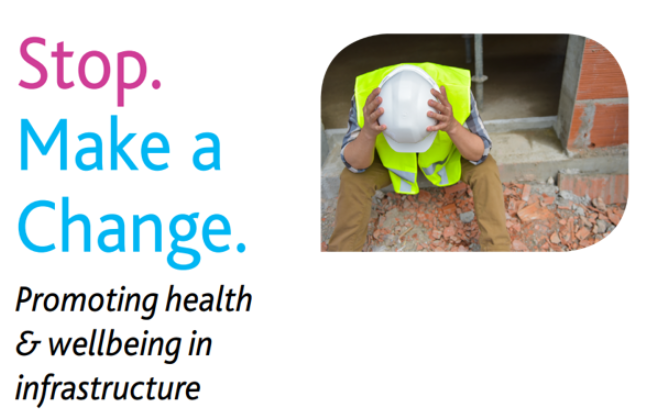Stop.Make A Change Campaign - Focus on Fatigue Management
1 Mar 2017
Promoting health and wellbeing in infrastructure
In April 2017 companies and organisations from across the UK infrastructure sector will take part in a joint national initiative targeting improvements in health, safety and wellbeing for the sector. Stop. Make a Change. will see sites, offices and manufacturing facilities stop work from 10am until noon on 18 April, to allow staff and suppliers working there to take time to discuss some of the challenges we face as a sector and how they can be overcome.
The campaign will focus on four key issues – respiratory illness, plant safety, fatigue and mental health. We delve into the subject of fatigue in the construction workplace and what companies can do to make this issue.
Are you of the mindset that feeling tired and fatigued at work is just all part of the usual working day? But while tiredness is easy to belittle, there’s a lot more to it than meets the eye. Fatigue can actually pose a serious health and safety risk. When long working hours and shift-working are mixed, fatigue becomes just as serious a workplace hazard as any other out there.
Why is fatigue a risk?
Let’s put this into context – well over 3.5 million people in the UK working shifts, fatigue is a serious hazard for UK workplaces. With long working hours without adequate periods to rest and recover in between, it’s easy to cross the line between feeling a bit tired, to having your performance levels drop.
Beyond feeling a little tired and weary, it can actually lead to a decline a mental and physical performance, lack of attentiveness, memory problems, poor reaction times and much more.
What causes fatigue?
Two of the main causes of fatigue are simply spending long, repeated periods being awake, or irregular and disrupted sleep patterns. For those working shifts or repeated long hours, both of these factors are pretty common, with extended shifts or shift rotations across different times of day and night being commonplace.
How can you reduce the risks?
Just like any other workplace hazard that we have discussed in this blog space, fatigue needs to be addressed and managed, to avoid it becoming a serious risk. In combination with the physical factors aa regular risk assessment should also identify if fatigue is a risk for workers too, before taking steps to counter it. This is so crucial for those working in safety critical roles.
One smart card to manage all site worker fatigue risk There are numerous steps you can take to minimise the risk of serious fatigue and these will depend on your workplace and conditions. This quite possibly mean checking upon staffing levels and how this resources is managed. Alternative shift schedules might have to be re-jigged, to make sure that work activities, duration and rotation are well balanced and double shifting does not occur.
You can also provide on-site places to rest, to help workers recuperate adequately in between shifts more easily.
Key Fatigue Stats:
Here’s why you shouldn’t ignore it:
- It leads to 20% of accidents on the UK’s roads
- It can cost businesses up to £240 million
- It can be caused by a number of factors – from monotonous hours on the same task, to long working days and disrupted sleep patterns
- A risk assessment, referring to the fatigue risk index, is one of the best ways to identify what steps you need to take, to minimise the impact of fatigue.
Mosaic has a Fatigue Management module which can bolt onto its system. When used in conjunction with access control systems, it will enter start and finish times. Using the available data, the system will instantly alert the management team by identifying any employees who are at risk of fatigue or have already breached certain controls, such as double shifting.
Mosaic Management Systems
Website
T: 01509 269669
The Gate House
43b Church Gate
LE11 1UE
Loughborough, Leicestershire
United Kingdom
List your business for free
Create a business listing on the SHP directory
Advertise with us
Download our media pack, and find out how we can meet your needs with a range of pricing options.


